Sarah Sundin's Blog, page 208
September 11, 2018
Today in World War II History—Sept. 11, 1943
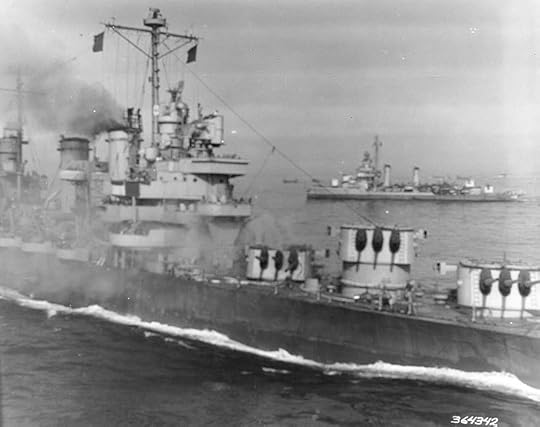
Light cruiser USS Savannah immediately after being hit by German FX-1400 bomb in Salerno Bay, Italy, 11 September 1943 (US National Archives)
75 Years Ago—Sept. 11, 1943: Germans finish occupation of Rome & northern Italy, capturing most of Italian army.
Light cruiser USS Savannah is damaged by a German FX-1400 guided bomb off Salerno, Italy, 206 killed.
New song in Top Ten: “Paper Doll.”
September 10, 2018
Today in World War II History—Sept. 10, 1943
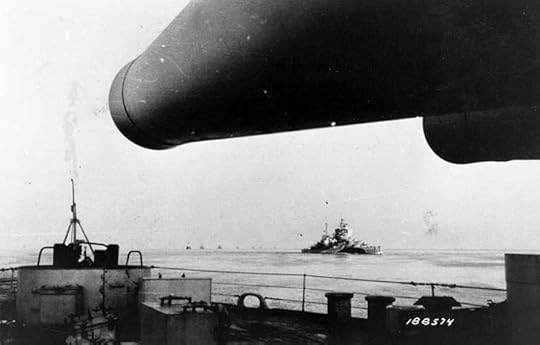
Italian fleet steaming into Malta to surrender to the Allies, 10 September 1943 (US National Archives)
75 Years Ago—Sept. 10, 1943: Naval battle of Mediterranean concludes as the Italian fleet arrives at Malta & surrenders to the Allies.
British X Corps secures Salerno town in Italy.
On New Guinea, Australians begin push from Nadzab to Lae.
September 9, 2018
Today in World War II History—Sept. 9, 1943
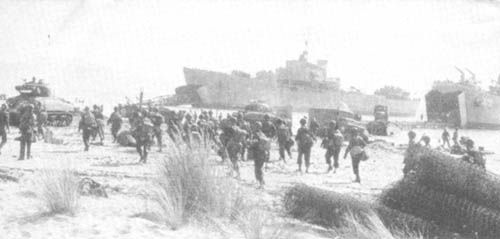
US Fifth Army landing via LST at Paestum in Salerno Bay, Italy, 9 September 1943. (US National Archives)
75 Years Ago—Sept. 9, 1943: Operation Avalanche: US Fifth Army and British X Corps land at Salerno, Italy, while British Eighth Army lands at Taranto.
Italian fleet departs La Spezia, Genoa, and Taranto as Germans occupy the country; Italians scuttle warships that can’t sail.
Luftwaffe sinks Italian battleship Roma as it tries to escape, 1253 killed.
Esther Forbes’s classic children’s book Johnny Tremain is published.
September 8, 2018
Today in World War II History—Sept. 8, 1943
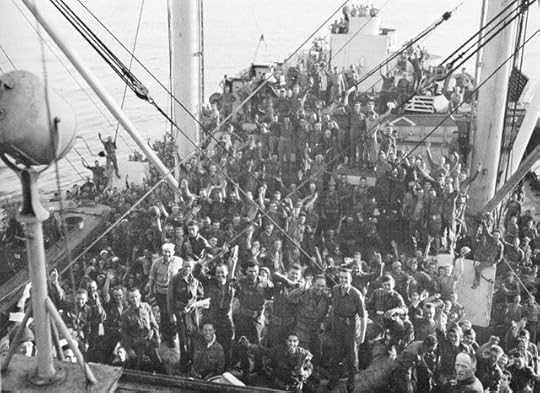
US troops en route to landing beaches at Salerno, Italy cheer the Italian surrender, 8 September 1943 (US Army Center of Military History)
75 Years Ago—Sept. 8, 1943: Eisenhower announces secretly negotiated Italian surrender at 6:30 pm, 9 hours before the Allied landings at Salerno and Taranto.
Germans activate Operation Achse (occupying Italy and Italian-occupied French Riviera) at 8 pm, entering Rome and taking over the Italian coastal division at Salerno.
On Corsica, civilians rise up against Italians and occupy capital of Ajaccio.
September 7, 2018
Today in World War II History—Sept. 7, 1943
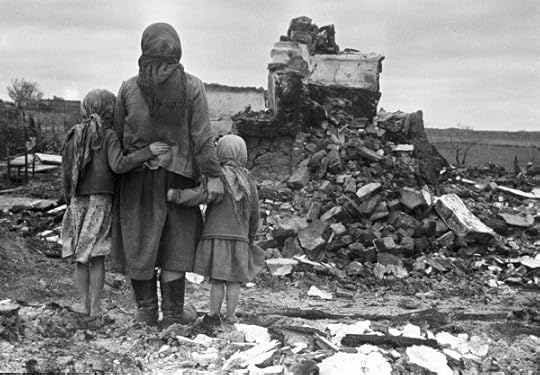
Russian mother and children looking at a destroyed home, Russia, 1 Sep 1943 (Russian International News Agency 982)
75 Years Ago—Sept. 7, 1943: German 17th Army begins evacuating Kuban bridgehead in southern Russia as Soviets advance.
Off Salerno, Italy, sub HMS Shakespeare sinks Italian sub Velella, the last Italian sub lost to enemy action; all others will surrender to the Allies the following day.
Actor Orson Welles marries actress Rita Hayworth.
September 6, 2018
Today in World War II History—Sept. 6, 1943

1953 Bowman baseball card of Carl Scheib of the Philadelphia Athletics (public domain via Wikipedia)
75 Years Ago—Sept. 6, 1943: New high-speed Congressional Limited train derails at Frankford Junction, Philadelphia, PA, 79 killed.
Carl Scheib, age 16, becomes the youngest pitcher in American League, playing for the Philadelphia A’s.
September 5, 2018
Today in World War II History—Sept. 5, 1943
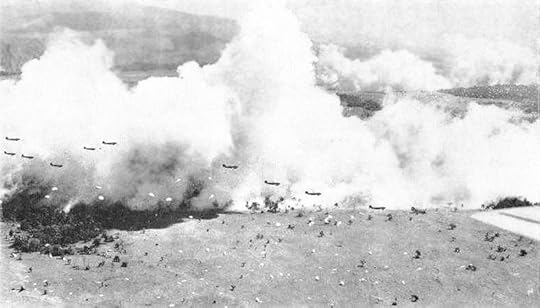
US C-47s dropping US 503rd Parachute Infantry Regiment at Nadzab, New Guinea, 5 Sept. 1943 (Australian War Memorial 128387)
75 Years Ago—Sept. 5, 1943: US & Australian paratroopers land in Nadzab, New Guinea to encircle Japanese near Lae; first US paratrooper action in the Pacific.
Penicillin is delivered to dying 15-year-old Shirley Carter in Macon, GA by a B-24 Liberator bomber and with police escort; she survives.
September 4, 2018
Today in World War II History—Sept. 4, 1943
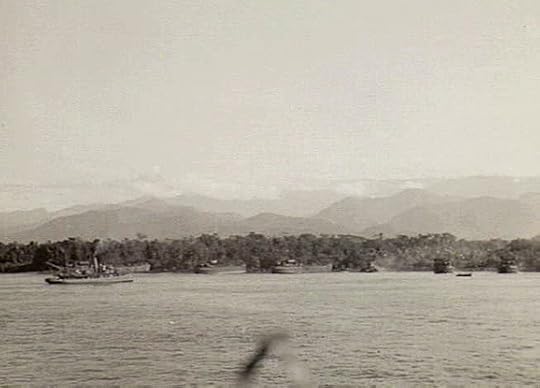
Australian troops landing at Lae, New Guinea, 4 September 1943 (Australian War Memorial No. 042371)
75 Years Ago—Sept. 4, 1943: Australian 9th Division lands near Lae on New Guinea.
September 3, 2018
Lessons from the 1940s – Labor Counts
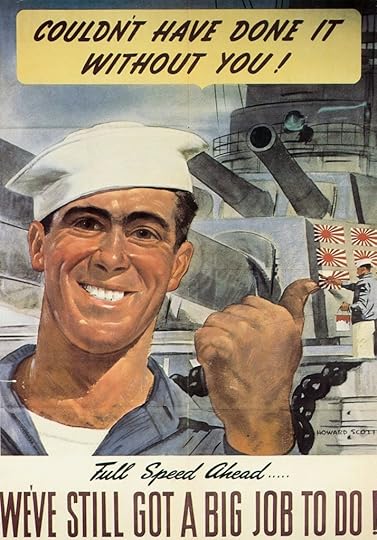
US poster 1943
On Labor Day I thought it was appropriate to honor the vital role of production in the Allied victory in World War II.
The United States was well situated to become the “Arsenal of Democracy.” Other than a handful of bombings from Japanese submarine-based planes and shellings from submarines, American soil was unscathed by the war. The factories and shipyards functioned free from danger. The US also had a large industrial infrastructure with Yankee flexibility. Assembly lines for automobiles and washing machines were quickly reconfigured to crank out jeeps and tanks.
To compensate for the loss of labor due to the military draft, women stepped forward to work in the factories, with 16 million women in the workforce by 1943.
Work days were lengthened and manufacturing wages rose, from an average of $25 per week in 1940 to $45.70 in 1944, even while civilian prices and rents were frozen.
American industry and workers stepped up production so that by 1944, real economic output had increased 150%. By 1942, the United States produced more arms than all the Axis countries combined. As a result, America was able to keep itself and the rest of the Allies well supplied.
Dark spots existed. Despite taking a “no-strike pledge” after Pearl Harbor, unions launched many strikes that slowed production, especially in the railroads and the coal and steel industries. The threat of government takeover, public outrage, and disgust from the military ended these strikes. In June 1944, sailors on the seaplane tender USS Coos Bay sarcastically sent $412 in pennies to buy off the workers at the Wright aircraft factory in Ohio.
In the end, American production was a key factor in the Allied victory. By keeping the Allies suppled with arms, vehicles, planes, ships, equipment, uniforms, medical supplies, and food, the “Arsenal of Democracy” lived up to its name.
Today in World War II History—Sept. 3, 1943
![Map showing Allied invasion of Italy on September 3, 1943 (British at Reggio di Calabria) and on September 9, 1943 (US & British at Salerno and Taranto) [Map: US Army Center of Military History]](https://i.gr-assets.com/images/S/compressed.photo.goodreads.com/hostedimages/1536066833i/26251206._SY540_.jpg)
Map showing Allied invasion of Italy on September 3, 1943 (British at Reggio di Calabria) and on September 9, 1943 (US & British at Salerno and Taranto) [Map: US Army Center of Military History]
75 Years Ago—Sept. 3, 1943: Operation Baytown: British Eighth Army lands unopposed in Calabria on the toe of Italy at Reggio, Gallico, and Catona.Italy signs secret armistice with the Allies.



